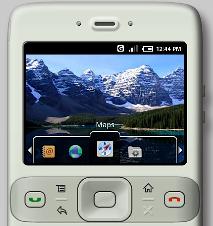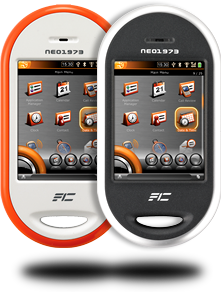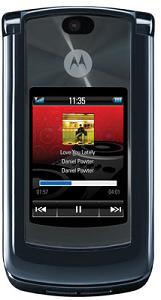

The average cell phone user probably can’t name the OS running on their phone. Millions of consumers couldn’t tell you what Symbian is, whether Windows Mobile is troubled by bloat, or even whether they’re excited about the possibilities of Android. However, the capabilities of regular mobiles are limited and the stresses put on them by their users even more so. When you enter the smartphone arena, the OS running on a phone makes a lot of difference.
The speed and usability of the UI, the amount of applications available and likelihood of further apps being released, and the limitations imposed by the OSes’ creators all have their place in smartphone shoppers’ considerations. In a way, the smartphone market is more like the PC market, and so it makes sense that as Linux challenges the dominance of the established OSes in that market, so it should in others.
Not just a “Linux OS”
It’s worth mentioning that simply saying “Linux” is misleading – many “Linux” devices only use portions of code from the base, or have built upon the kernel, or are different OSes altogether. However, “Linux” is the term which unifies people on these matters, and while “Free and Open Source Software” is more exact, “Linux” is a brand.
You don’t see too many phones running Linux for the same reason you don’t see many PCs running it: it rarely comes pre-installed, and it’s not the easiest thing to install from scratch. Things are changing, however, and not only are many phones beginning to ship with Linux built-in, but there are resources available for savvy users who want to break out of the cage imposed on them by the manufacturers. And just as many free and open source programs like VLC are becoming popular, components of free and open source OSes and programs belonging thereto may also be poached by mobile developers to augment their systems.
Many companies are focusing on the upcoming open source tidal wave by developing with that environment in mind; the LiMo Foundation and the Open Handset Alliance are two formal groups of companies comprising many major manufacturers and developers whose common goal is to bring Linux to the handheld world. Even the well-known Ubuntu distribution has added its weight behind a mobile initiative.
Some Early Contenders
 First on everyone’s minds has to be Google’s Android platform. Google has become a trustable, non-evil household name and seems to be the shot in the arm for the Linux phone world that they couldn’t give themselves. Like many things, a simple lack of real exposure is one of the things that has held Linux back in the mobile world. Google has enough clout to make people see what they’re missing, and actually push a product to market where it will, hopefully, be judged on its merits and not dismissed as a flash in the pan.
First on everyone’s minds has to be Google’s Android platform. Google has become a trustable, non-evil household name and seems to be the shot in the arm for the Linux phone world that they couldn’t give themselves. Like many things, a simple lack of real exposure is one of the things that has held Linux back in the mobile world. Google has enough clout to make people see what they’re missing, and actually push a product to market where it will, hopefully, be judged on its merits and not dismissed as a flash in the pan.
The UI has been shown to developers, though there was some concern over the usability of the SDK. Since no one has their hands on an actual phone at the moment, it’s hard to judge how well it works, but with Google’s coders and the open source community, my guess is there will be many bugs that will be squashed in a timely fashion.

One emerging platform is OpenMoko. Their Neo 1973 phone has been a mascot of sorts and is touted by some as an open-source iPhone. With a big touchscreen, Wi-Fi and Bluetooth, USB, GPS, unified hardware architechture, and so on – and it will be open from the start, no putting off of SDKs, no jailbreaking necessary. At the moment it’s still in development, and if you feel like putting the phone together and programming stuff for it, go for it. But a commercially viable, end-user-capable product probably won’t be ready for at the very least several months.
 On the other side of the spectrum, we’re seeing major companies like Motorola injecting their popular products with a creamy Linux filling. In fact, they’ve sold millions of Linux-powered phones – just not in the USA. But just a couple months ago Motorola shipped the RAZR2 V8, which doesn’t exactly qualify as a smartphone, but it’s close, sporting a touchscreen on the outside, 2GB of storage space and a full HTML browser on EDGE. Motorola was $1bn under estimates and committed to using Linux in many of its devices, though they have only recently brought them here.
On the other side of the spectrum, we’re seeing major companies like Motorola injecting their popular products with a creamy Linux filling. In fact, they’ve sold millions of Linux-powered phones – just not in the USA. But just a couple months ago Motorola shipped the RAZR2 V8, which doesn’t exactly qualify as a smartphone, but it’s close, sporting a touchscreen on the outside, 2GB of storage space and a full HTML browser on EDGE. Motorola was $1bn under estimates and committed to using Linux in many of its devices, though they have only recently brought them here.
Palm recently tapped Wind River, a mobile Linux/BSD development company, to provide the OS for its ill-fated Foleo device. That didn’t turn out so well, but they also have their ACCESS Linux Platform, which is supposed to be the successor to the current Palm OS. You can’t find it any any real form anywhere, but it had a presence at the last 3GSM World Conference, and looked pretty functional. It’ll support multiple frameworks and continue with Palm’s philosophy of simplicity.
Future International Standard
 Right now, the state of Linux in the smartphone world is split in two. In the US, it’s an emerging phenomenon and as such is only available as a platform and in a limited fashion in some phones. However, in the rest of the world, it’s an established force and has overtaken WinMo in China and holds 30% of the market. The basic philosophy of a free and open source OS with a dedicated support system has caught on in other places as well – in India and Japan Linux is used by some of the majors and is gaining market share as it is updated and the application base is expanded.
Right now, the state of Linux in the smartphone world is split in two. In the US, it’s an emerging phenomenon and as such is only available as a platform and in a limited fashion in some phones. However, in the rest of the world, it’s an established force and has overtaken WinMo in China and holds 30% of the market. The basic philosophy of a free and open source OS with a dedicated support system has caught on in other places as well – in India and Japan Linux is used by some of the majors and is gaining market share as it is updated and the application base is expanded.
2008 will likely be another preparatory year in the US – Google wants Android-based phones to be shipping in the summer and OpenMoko is planning on a wider, cheaper, and more advanced phone release around the same time, but neither will likely hit their target.
That said, the SDKs will be out there and the platforms will be publicized and scrutinized, and the phones that do eventually come out will be powerful and versatile. And with the smartphone portion of the market growing as well, we’ll be seeing flagship devices with all the capabilities of smartphones today, but adding the flexibility of an open platform. Expect the big phone manufacturers to all try their hand with Linux handhelds to test the water – and if their success here is anything like their success around the world, they’ll be an established market force by this time next year.